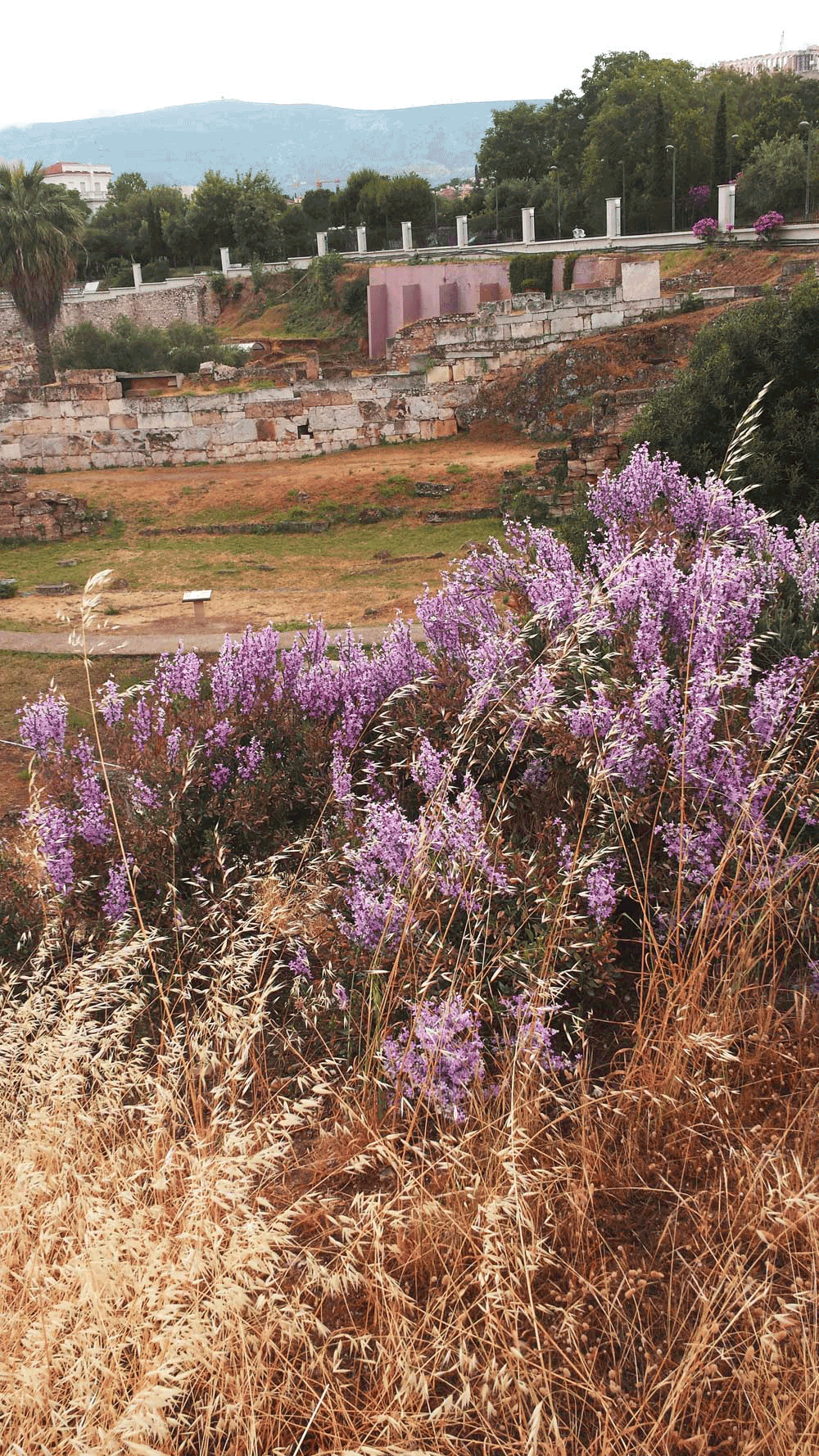

GG Grace

The Kerameikos consisted of the inner portion, which sat behind the walls surrounding Athens, and the outer portion, home to the public cemetery. When entering or exiting the city on the northwest corner, one typically would have gone through the Thriasian Gate, more commonly referred to as the Dipylon Gate. As one exited a slight left would have taken one down the Sacred Way, leading to Eleusis, and a sharper left down the Street of Tombs. Travelling straight ahead would have led past the Tomb of the Lacedaemonians and brought one to Plato's Academy, established around 387 BCE.
Kerameikos




The outer Kerameikos today. It's just a short walk from the ancient Agora and it and the museum are well worth the time.



Ancient Athens' Sacred Gate and the Sacred Way and the Eridanos River alongside, as one would be approaching the city.


The information plaque to the left reads:
“The ancient road, 1600 metres in length, leading from the Dipylon Gate to Plato’s Academy was called simply the Kerameikos or the Dromos. It was the most official road in the city because on either side of it, in the so called Demosion Sema (Public Tomb), were buried prominent Athenians and also those who fell in the city’s battles. At the beginning of the Dromos there was a square 40 metres wide, where the Athenians congregated to honour their dead with ceremonies, games and funerary speeches. Pericles’ Funerary Oration for the first dead in the Peloponnesian War in 430 BC was one of them. In the Demosion Sema were the tombs of distinguished Athenians, like Pericles, the Tyrant-Slayers Harmodius and Aristogeiton, Kleisthenes, Thrasybulos, Lycurgus and others. The excavations of the Dromos uncovered its Classical level only along the western side. The monuments bordering it are, in order, an Archaic tumulus, a Classical bath, the funerary monument of the Lacedaemonians who fell in 403 BC and the peculiar burial monument at the third boundary stone. The east side of the Dromos has not yet been excavated…”
Tomb of the Lacedaemonians
The Dromos exiting the Thriasian Gate (Dipylon) and heading towards Plato's Academy. The Tomb of the Lacedaemonians is the structure center-left of the road.


Athenians are generally affable. Maybe this one just got tired of all the tourists asking him where the beach was.

The famous grave stele of the young horseman, Dexileos of Thorikos. Click to continue.